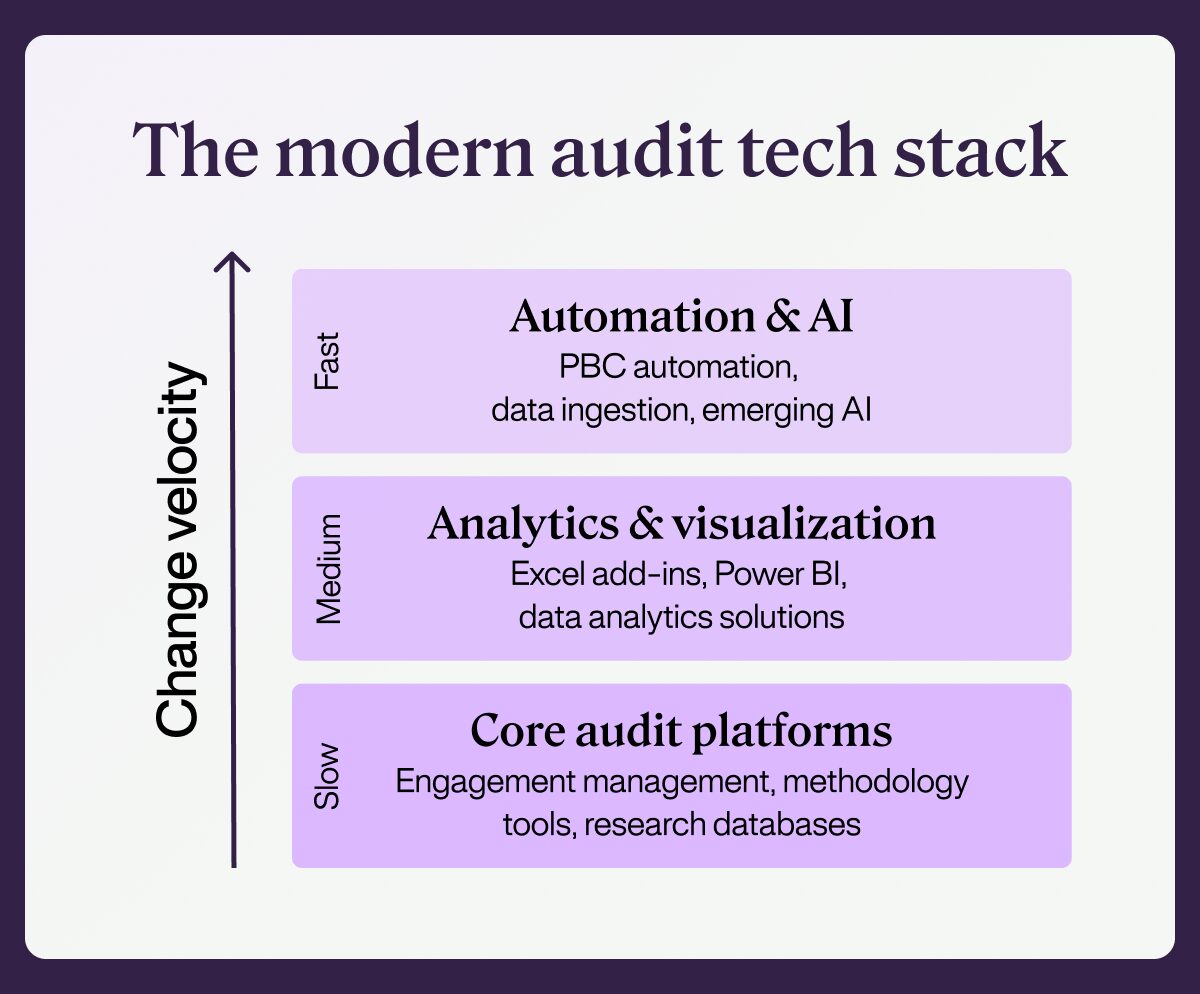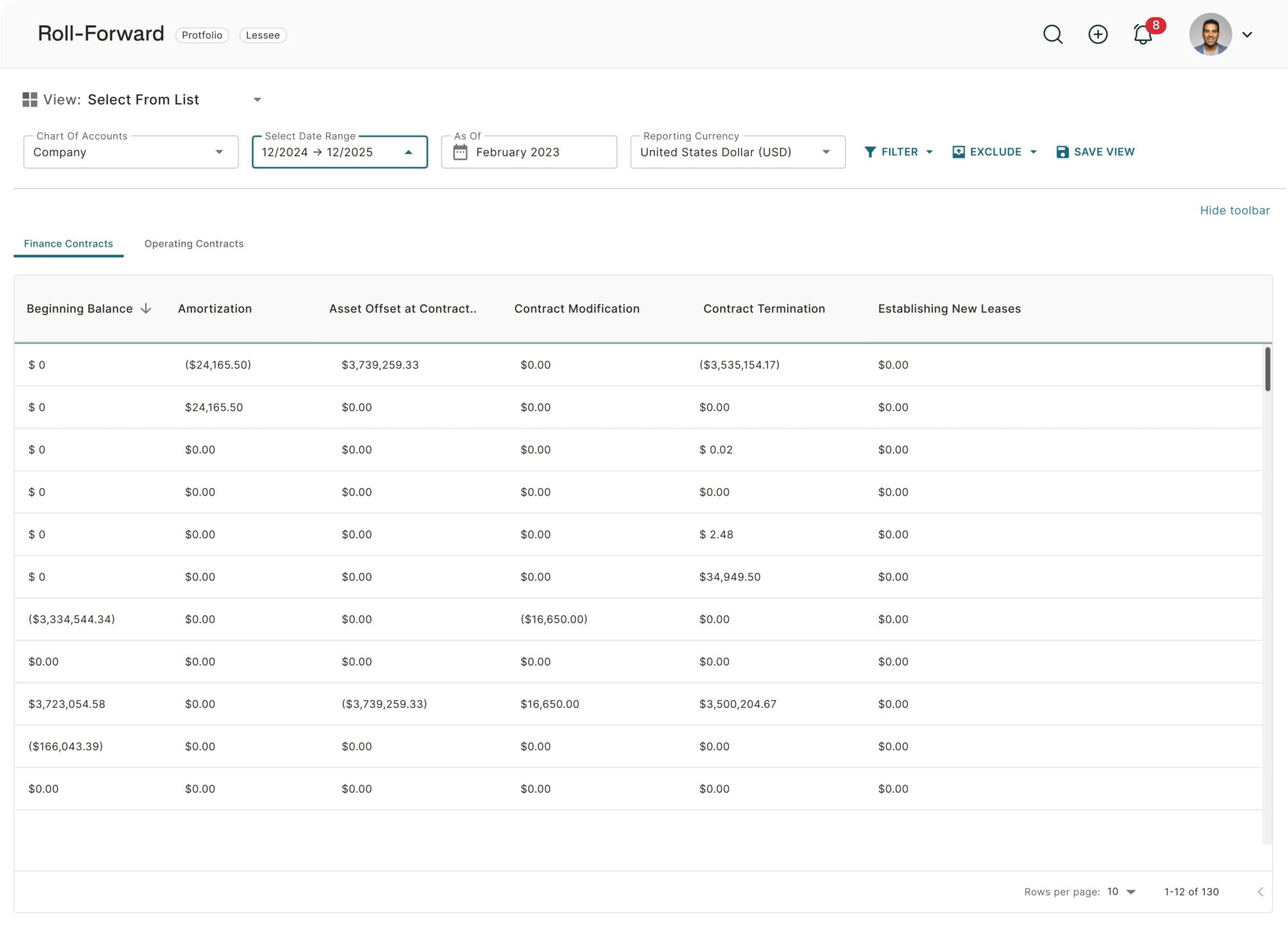The audit landscape is changing. Firms once tethered to desktop tools are assembling nimble ecosystems around cloud platforms, open APIs, and AI.
To understand how this transformation is unfolding on the ground, we brought together:
- Andy Hines, Audit Partner at Whitley Penn
- David Rich, Senior Manager at Clark Schaefer Hackett
- Mike Bowman, Commercial Director at Validis
- Dudley Gould, VP Business Development at Circit
At Trullion, we see first-hand how firms are re-shaping their audit stacks around automation and AI – and we wanted to hear how leaders are making those decisions in practice. Here are the highlights to our discussion (you can also watch the full webinar on-demand, at any time).
1. How firms decide what to buy
At Whitley Penn, the team measures every new tool against three pillars: efficiency, quality, revenue. If a product delivers on two of the three, it’s worth a serious look:
- Efficiency: Cut manual work, free staff from endless data entry, reduce hours per engagement
- Quality: Strengthen audit outcomes, reduce risk, enhance client experience
- Revenue: unlock new services or expand into new client segments
The approach was crafted by an innovation group made up of team members from different practices and offices, ensuring a broad perspective. It’s a philosophy shared by Clark Schaefer Hackett’s David Rich. “You really need that cross-section across the firm of people who have exposure to things we’re not as familiar with… Maybe a tool isn’t as applicable to me, but someone in our government practice sees a huge use case for it,” he noted.
These groups often become champions of the new software – early adopters who drive rollout, help train new users, and build momentum.
David added two more pillars he finds especially important: UI/UX and client experience. Design is the interface between the client and the firm. “That needs to be top-notch. Ultimately, it can become part of the face of the firm,” he said.
Another non-negotiable: usage metrics. Andy explained that this helps separate vendor promises from reality.
Vendors can claim big efficiency or adoption gains, but only concrete usage data shows whether a tool is truly delivering the value it promised.
2. Adoption is the difficult part
Getting people to use new software, every day, often feels like an uphill climb. Our panelists agreed that adoption is most successful when the tool addresses pain points.
At Clark Schaefer Hackett, teams review usage metrics every two weeks and feed insights back to vendors. “When our users are seeing their feedback actually being incorporated into the product, that boosts adoption,” David said. The feedback loop is paying off: They’ve achieved ~75% daily active users and ~90% monthly on new tools.
Andy added that communication is just as important as functionality, with frequent, clear, and repetitive messaging.
Adoption isn’t a one‑time push. It’s an ongoing campaign. Pilot with champions, monitor usage, and keep feedback loops active.
3. What “modern” actually means
When the panelists talked about “modern” audit software, four qualities came up consistently:
- Cloud‑based delivery: Desktop software has hit its ceiling. Cloud enables access anywhere, smoother client exchanges, and faster vendor updates.
- Open APIs: The future is an ecosystem of connected, best-in-breed tools. APIs make integrations possible.
- Collaborative partners: Firms aren’t just looking for new software. They’re looking for partners with an innovation mindset who will continuously listen, train, and adapt.
Andy stressed that shipping velocity is non-negotiable: if you’re going months without updates, you’re falling behind. David added that he evaluates vendors by how their product and development teams show up in meetings. Are they receptive, resourced, and excited to implement feedback?
And then there’s AI. Andy visualized the firm’s stack in three layers:
- Core audit platforms: The foundation consists of engagement management systems, methodology tools, and research databases. These platforms are deeply embedded in firm processes and change slowly, given their impact on compliance and consistency.
- Analytics and visualization: The middle layer is tools like Excel add-ins, Power BI, and data analytics solutions that help teams explore trends and deliver insights. This layer evolves at a moderate pace, driven by efficiency gains and client reporting needs.
- Automation and AI: The top layer is where speed and experimentation take over. It’s PBC automation, data ingestion, confirmation tools, and emerging AI solutions – where new technology can be piloted and iterated quickly, but also where governance and risk management become critical.

The last layer is where innovation – and risk – moves fastest. Modern firms need to be comfortable experimenting there while keeping the foundations steady. That means piloting new tools in controlled environments, establishing clear ownership for AI governance, and ensuring that rapid iteration doesn’t compromise audit quality.
4. Best‑in‑breed beats all‑in‑one
Ten years ago, the safest bet was an all‑in‑one platform – one vendor, one contract, one login. Today, the consensus is shifting.
Open APIs unlocked the shift from monoliths to ecosystems. Instead of settling for one tool that does everything, firms can assemble a stack of specialists.
The trade‑off is complexity. Multiple vendors means multiple contracts, pricing models, and support channels. And while smooth integrations and vendor collaborations aren’t always a given, when they do happen, the upsides are clear: faster innovation and more resilient stacks.
5. The audit tech stack modernization roadmap
What’s next? For most firms, the answer is depth, not breadth. Panelists emphasized consolidating the adoption of the tools you already have before implementing new ones.
David framed near-term focus on driving adoption and broadening use cases across existing platforms. Beyond that, his biggest bet is agentic AI – systems that can take initiative and handle multi‑step audit tasks. “That’s probably my biggest focus aside from our existing stack,” he said.
Andy emphasized culture. Change fatigue is real, but his mantra is that something should always change.
Watch the full conversation
At Trullion, we’re building the audit execution layer of this modern stack: powered by AI, designed for adoption, and integrated with the tools you already use.
To see how firms like Whitley Penn and Clark Schaefer Hackett are approaching modernization, watch the full on-demand webinar.





